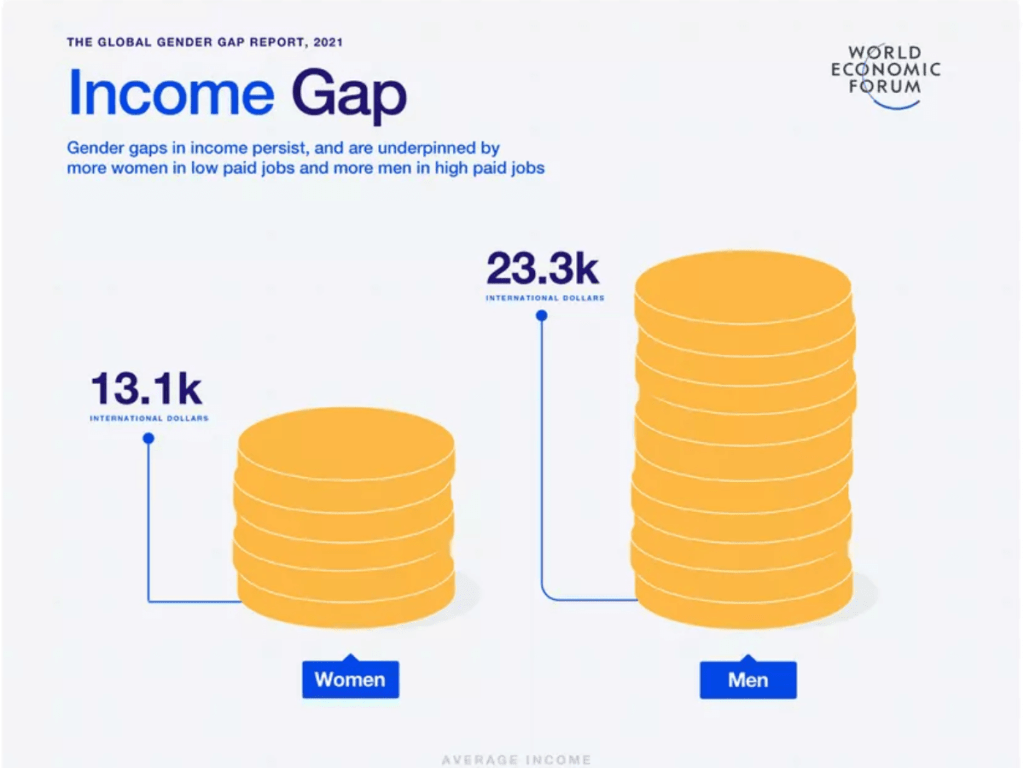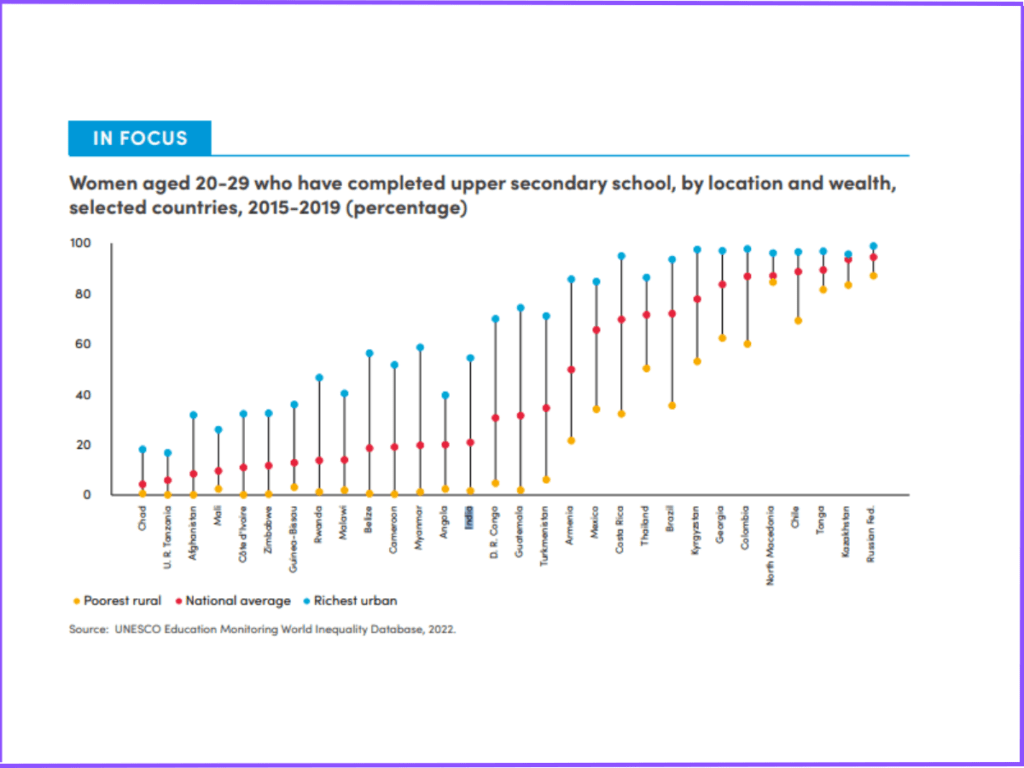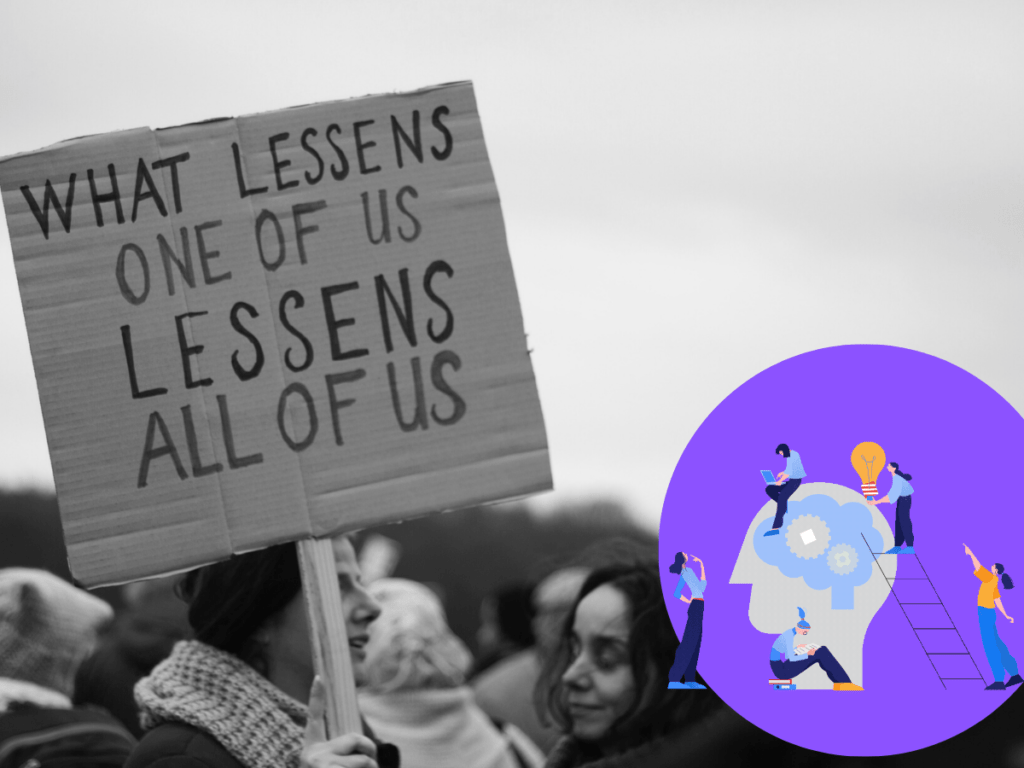Despite being surrounded by supportive men and strong women in both my personal and professional life, I’ve often noticed and questioned a disparity that continues to exist between the genders. As a woman, I’ve often experienced some of these disparities through first-hand experiences. Every conversation and situation has led me to believe that taking an equitable design thinking lens could push us towards solving this complex problem.
So how do we go beyond statistics? How do we build solutions that account for the real-life experiences of women who are juggling social responsibilities with work and other obligations?
Here I look at three areas where promising solutions are being thought of already: unpaid care burden, education, and violence against women by men
The hidden cost of caring
The truth is that around the world, women continue to be disadvantaged by a working culture that is based on the ideological belief that men are better at work. To borrow from Caroline Criado Perez’s defining book, there is no such thing as a woman who does or doesn’t know how to work. Only a woman who is unpaid for her work.
Currently out of the 522 million Indians in the workforce, only 28% are women. Out of the limited number who work, they still earn less than men. The gender wage gap is one of the most significant issues women face in India. According to the World Economic Forum’s Global Gender Gap Report 2021, women in India earn only 22.3% of what men earn, a gap that has remained relatively unchanged for the last few years. This gap is particularly pronounced in the informal sector, where women earn only 60% of what men earn.

These socio-economic challenges faced by women in India translate into the decisions they make for their careers. The lack of opportunity can limit their ability to pursue their career goals and achieve economic independence.
This problem becomes even more significant when you look at women’s access to digital technologies. Despite its rapid growth in India, women are significantly less likely to have access to the internet and other digital resources than men. National Family Health Survey-5 data [from 2019-2021] assessed men’s and women’s internet use for the first time and found that only one in three women in India (33%) have ever used the internet, compared to more than half (57%) of men.
In rural areas, only 10% of women have access to the internet, compared to 25% of men. This lack of access to digital resources limits women’s ability to access information, connect with others, and pursue career opportunities in fields such as technology and digital media. Women in urban areas face different challenges, with many being expected to balance their careers with domestic responsibilities, making it harder to advance in their careers.
The first step would be, by empathizing with these women, and second would be by using design thinking techniques. This way, we can brainstorm solutions that prioritize the professional needs of caregivers, such as co-working spaces with on-site childcare.
One example is Women’s Initiative for Self-Empowerment (WISE), a non-profit organization based in Nigeria, that provides training and resources for women entrepreneurs. They have developed a program called “Mums in Business,” which offers support and training for women who are caregivers and want to start their own businesses. Another example is Mobile Creches, a non-profit organization based in India that provides early childhood education and care services to children of migrant workers in urban construction sites. They have developed a program called “Creche on Wheels,” which brings mobile creches to construction sites, allowing women who are caregivers to work while their children receive care and education.
An uneven playing field
As per UNESCOs report, inadequate resources, discrimination, and cultural attitudes prioritize boys’ education, leaving 132 million girls worldwide out of school. Even in developed countries, girls encounter gender bias in the classroom, sexual harassment, and a lack of women role models in STEM fields. Indian women face an even more significant challenge due to resource limitations. Globally, there is a lack of design thinking to address education equity, a critical issue impacting women’s education.
Although India has made remarkable progress in improving access to education, with an increase in universal primary school enrolment, girls still face significant barriers to obtaining an education. The female literacy rate in India is 70.3% as compared to 84.7% of the male literacy rate. Particularly in rural areas, 3 out of 10 girls have never attended a school.

Today in India 26% of girls are in STEM as compared to 74% of boys. A creative take on this is done by the GirlScript Foundation in India, which provides free coding education and mentorship to girls from low-income families, addressing the gender gap in STEM education. User research is key to developing solutions that address the needs of girls. Having more women in STEM education ensures women empowerment as well as work time flexibility and gender-neutral pay. It gives rise to social role models and enhances the socio-economic scenario in India.
In addition, the lack of separate toilets for girls in schools is another major barrier to their education, which must be tackled systematically and contextually. Toilets for All is one such organisation that focuses on better education through sanitation. This organisation brings together the government, funders, end-stakeholders and environment experts to build a contextual solution for every school and every city. This approach has helped them increase the attendance of girl students tremendously and instill the habit of using and cleaning toilets in the larger community.
The shadow of violence
Violence against women is a multifaceted social issue characterized by acts of physical, sexual, or emotional aggression perpetrated by men. The underlying causes of such violence can be traced to patriarchal structures that have historically favored men, granting them greater power, privilege, and control over women. This power imbalance creates a culture that normalizes and reinforces violent behavior by men against women, while simultaneously conditioning women to accept such behavior as acceptable.
The World Health Organization (WHO) estimates that 1 in 3 women worldwide experiences physical and/or sexual violence by an intimate partner or sexual violence by a non-partner at some point in their lives.
To address male violence against women, a human-centred approach is necessary to create effective solutions that put the needs and experiences of survivors at the centre. This means conducting empathetic research with survivors to understand the barriers they face in seeking help and support. Here, it will be critical to involve men as allies and advocates for change.
A few amazing examples of this is in Australia where the Safe Steps app provides women with a discreet way to access information and support for domestic violence, including a risk assessment tool and GPS location services to connect them with local resources. In Guatemala, a community-based education program called Manuela engages men and boys in discussions on gender-based violence and healthy relationships and provides support for male allies to become change agents in their communities. By incorporating the voices and perspectives of survivors, as well as engaging men as allies and co-creators of solutions, we can create effective interventions to end male violence against women.
These are not just women’s issues
As a woman, these issues are personal to me. But they are not just women’s issues – they are issues that affect all of us. When we create a society that values and respects women, we create a better world for everyone.
First and foremost, we need to recognize the value of women’s unpaid care work. This means investing in policies that support women’s caregiving responsibilities, such as paid parental leave and affordable childcare. We also need to address gender bias in education, both in terms of access and quality. This means ensuring that girls have access to education, as well as creating a classroom environment that is free from discrimination and bias. Finally, we need to address male violence against women by creating a culture that does not tolerate violence or abuse in any form.
It’s time to recognize the value of designing equitable solutions, and providing society with a powerful lens that solves this complex problem. I believe that with kindness, conducting user research, and involving diverse stakeholders in the solution, we can create strategies, interventions, and policies, that are truly human-centred and effective.
This blog was written by Shivani Gangakhedkar. Shivani is Associate Consultant at X-Leap, and works with changemakers in the social and non-profit sector.

